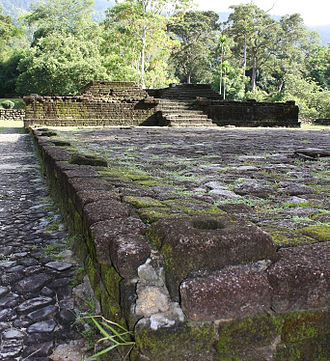Kedah

Kedah (Malay pronunciation: [kəˈdɑh];[3] Jawi: قدح), also known by its honorific Darul Aman or “Abode of Peace”[4] is a state of Malaysia, located in the northwestern part of Peninsular Malaysia. The state covers a total area of over 9,000 km², and it consists of the mainland and the Langkawi islands. The mainland has a relatively flat terrain, which is used to grow rice, while Langkawi is an archipelago, most of which are uninhabited islands.
Kedah was previously known as Kadaram (Tamil: கடாரம்; kadāram) by the ancient and medieval Tamils, Kataha or Kalahbar (Arabic: قتح; qataḥa or Arabic: قلحبر; qalaḥbar) by the Arabs, and Syburi (Thai: ไทรบุรี; RTGS: Sai Buri) by the Siamese when it was under their influence.[5][6]
To the north, Kedah borders the state of Perlis and shares an international boundary with the Songkhla and Yala provinces of Thailand. It borders the states of Perak to the south and Penang to the southwest.
The state’s capital is Alor Setar and the royal seat is in Anak Bukit. Other major towns include Sungai Petani, and Kulim on the mainland, and Kuah on Langkawi.
Around 788 BCE, a systematic government of a large settlement of Oghang Utagha of Kedah had already established around the northern bank of Merbok River. The state consisted a large area of Bujang Valley, covering Merbok and Muda River branches about 1000 square miles area. The capital of the settlement was built at the estuary of a branch of Merbok River, now known as Sungai Batu.[7] Archaeological evidence found in Bujang Valley (Malay: Lembah Bujang) reveals that a Hindu–Buddhist kingdom ruled ancient Kedah possibly as early as 110 A.D. The discovery of temples, jetty remains, iron smelting sites, and clay brick monuments dating back to 110 A.D shows that a maritime trading route with south Indian Tamil kingdoms was already established since that time.[8] The discoveries in Bujang Valley also made the ancient Kedah as the oldest civilisation in Malaysia.[9]
Reference to ancient Kedah was first mentioned in a Tamil poem Paṭṭiṉappālai written at the end of the 2nd century A.D. It described goods from Kadaram “heaped together in the broad streets” of Chola capital. Other than Kadaram, Kedah was known with different names at varying times in Indian literature; Kataha-Nagara (in Kaumudi Mahotsava drama), Anda-Kataha (in Agni Purana), Kataha-Dvipa (in Samarāiccakahā), and Kataha (in Kathasaritsagara).[10] In the middle eastern literature, ancient Kedah was referred as Qilah by Ibn Khordadbeh in Kitāb al Masālik w’al Mamālik, Kalah-Bar by Soleiman Siraf & Abu Zaid al Hassan in Silsilat-al-Tawarikh (travels in Asia), and Kalah by Abu-Dulaf Misa’r Ibn Muhalhil in Al-Risalah al-thaniyah.[11] The famous Tang dynasty Buddhist monk, Yi Jing who visited Malay archipelago between 688–695, also mentioned about a kingdom known as Ka-Cha in the northern part of Malay peninsular, which according to him was 30 days sail from Bogha (Palembang), the capital of Sribogha (Srivijaya).[12]
